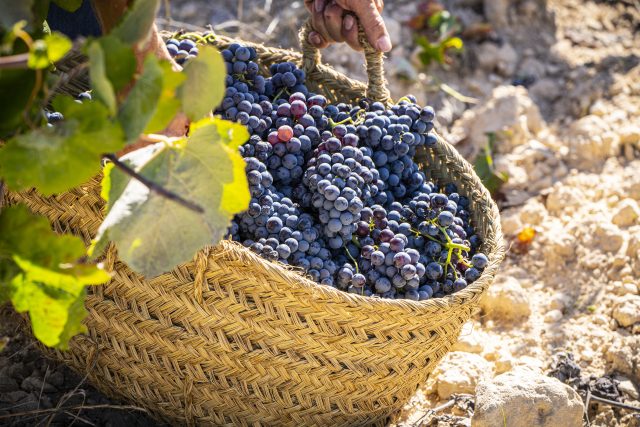This website uses cookies so that we can provide you with the best user experience possible. Cookie information is stored in your browser and performs functions such as recognising you when you return to our website and helping our team to understand which sections of the website you find most interesting and useful.
Groundbreaking new tech proves wine provenance
New Zealand company Oritain, which as db reported in October, had developed a forensic fingerprint that can prove the exact location from which a wine comes, is hoping to roll out its groundbreaking tech across the industry.

It’s a move that will excite fine wine enthusiasts all over the world by removing any niggling doubt over a bottle’s provenance. And with the notion of terroir increasingly exciting consumers, being able to scientifically pinpoint, down to a single vineyard block, where a wine comes from, will no doubt give buyers on the secondary market the confidence they need to invest in a wine, and eliminate any suspicions of fraud.
“No winemaker has ever been able to verify the exact location from which their wine comes, until now,” says Sam Lind, head of strategic sales for New Zealand-based tech firm Oritain. “Now, we have the science to guarantee it.”
Until now, the wine industry has been reliant on QR codes or bottle tags to prove the source and journey of a wine, however Oritain’s method works by drilling down on the unique chemical footprint of a terroir, which cannot be recreated. It’s the first analysis applied to the actual liquid inside the bottle on a wide scale rather than to the wine’s packaging.
So how does it work? The process starts by measuring levels of chemical elements specific to the environment in which a wine is made.
“Products chemically reflect their geology,” says Alistair Maling MW, former head winemaker at Villa Maria. “Chemical parameters naturally pass into plants and animals, which absorb them.”
Oritain carefully measures a suite of these trace minerals at site. By taking samples of authentic wines produced in a certain place – this could be a region such as Marlborough, a single vineyard within Marlborough or even a specific block within that vineyard – and analysing the chemical make-up of that sample, you can determine a unique profile that can’t be replicated. This chemical make-up is then stored on a virtual database.
When other wines are compared against the original product fingerprint stored in the database, it becomes immediately clear whether or not the wine being tested contains the same chemical make-up, and therefore, whether it hails from the same location.
“It’s as simple as asking ‘Is sample X consistent with the specifications from sample Y?’,” says Maling.
The reliability comes from the fact that underlying soil chemistry changes very little over hundreds of years.
Oritain has been collecting and analysing vineyard samples in New Zealand since 2002 to fully understand the differences in chemical profiles between areas.
“We took more than 700 grape samples from nine regions, including Canterbury, Central Otago, Marlborough and Wairarapa,” says Lind. “We noticed that the chemical footprints were significantly different from one another. The technical team was then delighted to discover just how definitive the sub-regional fingerprints could be.”
One of the first New Zealand wineries to trial the new tech is Pyramid Valley in North Canterbury, as db reported in October.
“We tried it on four of our blocks, two Chardonnay and two Pinot Noir. They are located very close together and there are small variations in soil and aspect. Our wines have always been marketed as being from these four individual blocks,” says Steve Smith MW, co-owner of Pyramid Valley, who was pleased to find that the tech was able to scientifically substantiate the difference between these blocks.
Pyramid also wondered whether Oritain’s method would stand up against testing wines from different vintages, especially during a time when a key change in winemaking approach had taken place from year to year. It did.
“All the wines, regardless of year or winemaking style, fell under the same chemical footprint,” Smith confirms.
“We looked at Oritain through the lens of the fine wine consumer, who wants absolute confidence that if a wine says it’s from a certain place, that it is. The science offers 100% transparency and challenges any notion of wine fraud.”
It’s not only the consumer that might want to verify a wine’s provenance. Maling points out that winemakers that have to adhere to certain practices and protocols to protect the quality of a region’s wine may wish to ensure that pretenders don’t get a look-in.
“Marlborough is a great example,” says Maling. “When there are strict rules about yields and so on, it becomes about regional protection and reputation.”
Furthermore, for companies that are bottling wine in market and need to prove to retailers that what left the winery is what will end up on shelves, the tech has clear benefits. The ability to run compliance checks could prove invaluable.
Once a wine has been verified by Oritain, its maker can choose to have the certification added to the back label.
“Especially in the fine wine world, the higher the guarantee that a wine comes from a certain place and is what it says it is, the better,” says Lind. “Our research found that people are prepared to pay 10-15% more for a product, knowing that it has a stamp of approval.”

